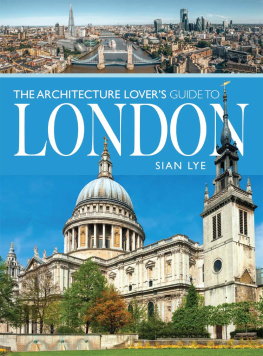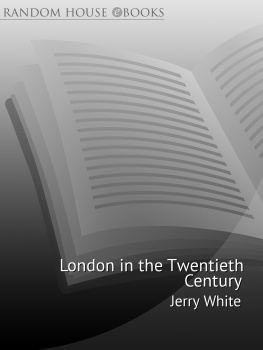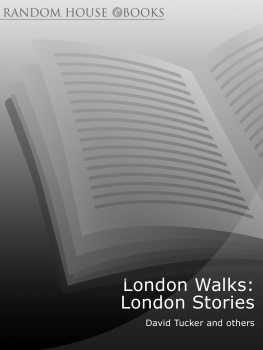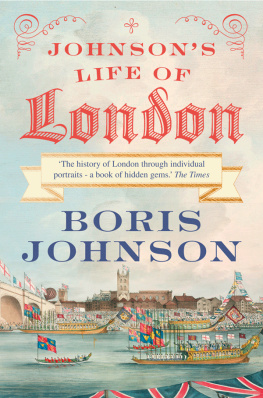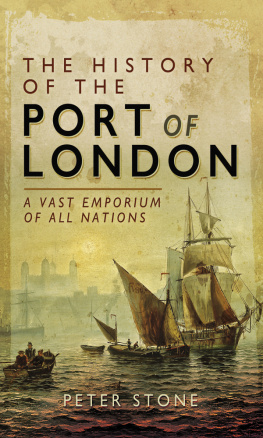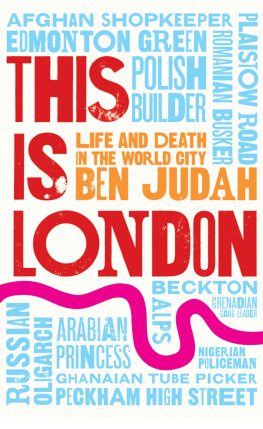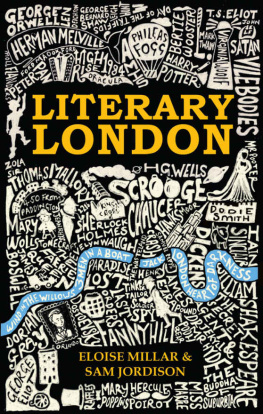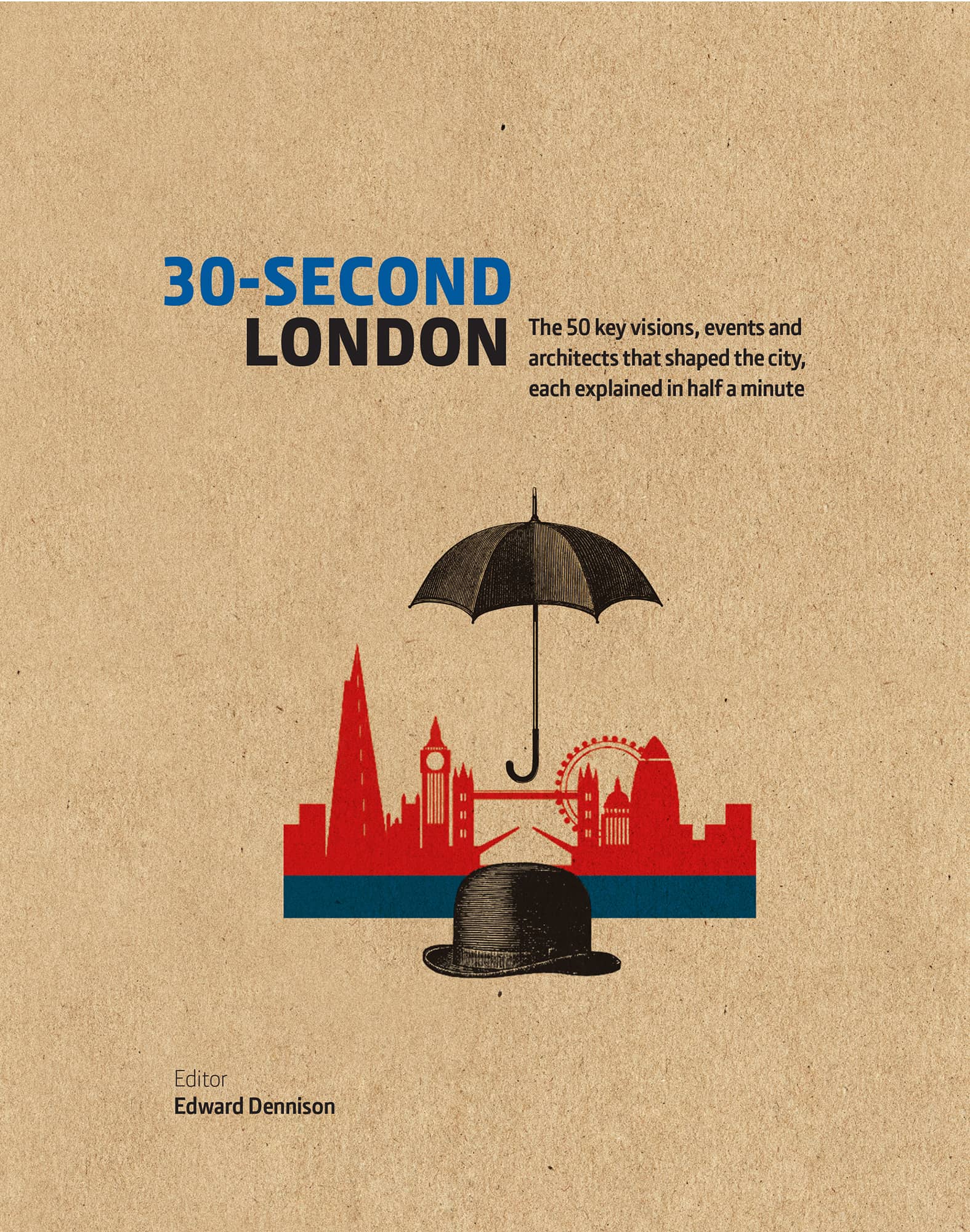30-SECOND
LONDON
The 50 key visions, events and architects that shaped the city, each explained in half a minute
Editor
Edward Denison
Contributors
Nick Beech
Edward Denison
Emily Gee
Simon Inglis
Alan Powers
Matthew Shaw
Jane Sidell
Illustrations
Nicky Ackland-Snow

First published in the UK in 2017 by
Ivy Press
Ovest House
58 West Street
Brighton BN1 2RA
United Kingdom
www.quartoknows.com

Copyright The Ivy Press Limited 2017
All rights reserved. No part of this publication may be reproduced or transmitted in any form by any means, electronic or mechanical, including photocopying, recording or by any information storage-and-retrieval system, without written permission from the copyright holder.
British Library Cataloguing-in-Publication Data
A catalogue record for this book is available from the British Library.
Digital edition: 978-1-78240-542-9
Hardcover edition: 978-1-78240-454-5
This book was conceived, designed and produced by
Ivy Press
Publisher Susan Kelly
Creative Director Michael Whitehead
Editorial Director Tom Kitch
Art Director Wayne Blades
Commissioning Editor Sophie Collins
Project Editor Joanna Bentley
Designer Ginny Zeal
Picture Researcher Katie Greenwood
CONTENTS
Guide
INTRODUCTION
Edward Denison
London is an extraordinary city. No other modern metropolis possesses such a long and continuous history, the evidence of which can be read in its streets and buildings, its governance and institutions, its commerce and culture. From its Roman origins early in the first millennia to its global eminence at the dawn of the third millennia, Londons success has relied on exchange of goods and of ideas. This exchange has been conducted by countless people within and far beyond the citys borders, the accumulation of which has created a historical record that fills more shelf space than any other city on earth. History weighs heavily on London, but it is also the source of its inspiration and constant renewal. This book has been conceived and written in response to this fragile relationship between the enduring and the ephemeral that has simultaneously built on the city's past, avoided its stagnation and stimulated its growth. This delicate balancing act is Londons story a resilient tale of tragedy and triumph spanning two thousand years.
London is many things to many people. Ask any commuter who has to endure the daily slog to and from work and they will complain bitterly, yet they will measure their suburban idyll by its proximity in minutes from the city centre. Ask a student and they will bemoan the cost of living, yet spend freely in the citys bars and clubs. Ask a City banker or trader and they will claim to be the citys lifeblood, while wilfully bleeding it dry. Ask an architect and they will whine about the citys appearance, yet be desperate to add their signature to the chaos. Dont even ask a city planner, they don't appear to be from this planet! Ask a tourist and they will worship its history, yet denounce the antiquated accommodation and outmoded Tube. Ask a refugee and they will be grateful for the citys sanctuary, unaware of the historical precedent in their journey. Ask a resident and they will delight in complaining while quietly appreciating being able to call this alluring, exhilarating, enriching, impossible, uncontrollable, quaint, welcoming and wonderful city home.

History inspires London, from the neo-Gothic Elizabeth Tower that houses Big Ben to the Shard (2013), which recalls London's church spires and the tower of nearby Southwark Cathedral.
Of all the views depicted of London and opinions expressed over the centuries, the most famous was by Samuel Johnson, who, in 1777, wrote: when a man is tired of London, he is tired of life; for there is in London all that life can afford. It is fitting that such a truism was quoted by someone who would not consider themselves a Londoner, but then what is a Londoner? London is too large and too complex to offer itself to any individual. Its appeal is its inscrutability anyone can make London their home and feel at home, and millions do.
How this book works
This book has been written by scholars who live and work in London and for whom London is a central theme in their work, whether through teaching or research. The purpose of the book is to illuminate Londons past so as to make sense of the present. Birth of the City deals with origins, the earth on which the city was built, those who have made it their home, and the constellation of settlements that helped define its polycentric character. The second chapter, Building London, looks at those who legislated and financed its growth, and the form its major developments took, from planned streets and squares to sprawling suburbs. We then look at the citys assorted Architecture, from the advent of the profession to the latest glass and steel erections. Chapter four, Arts & Culture, focuses on Londons creative spirit, acknowledging its contribution to creative inspiration and cultural resistance. Innovation & Learning looks into Londons world-class museums, galleries and educational institutions, marvelling at some of the practical outputs of this knowledge in the feats of engineering that have allowed the city to grow and its population to thrive. Business & Pleasure observes what makes London tick the places and spaces where Londoners do business and find pleasure. Finally, Enigmatic London discovers the citys quirkier characteristics and reveals its dark side.

The magnificent roof covering the Queen Elizabeth II Great Court inside the British Museum, redesigned by Foster and Partners (2000).
Each entry is made up of a 30-second tour which explores the subject, the essence of which is distilled into a 3-second survey. A further 3-minute overview elaborates on the topic by concentrating on a specific detail. A biographic spread in each chapter illuminates an individual associated with the overarching theme of the chapter.
pre-1000
43 CE
Romans invade Britain



